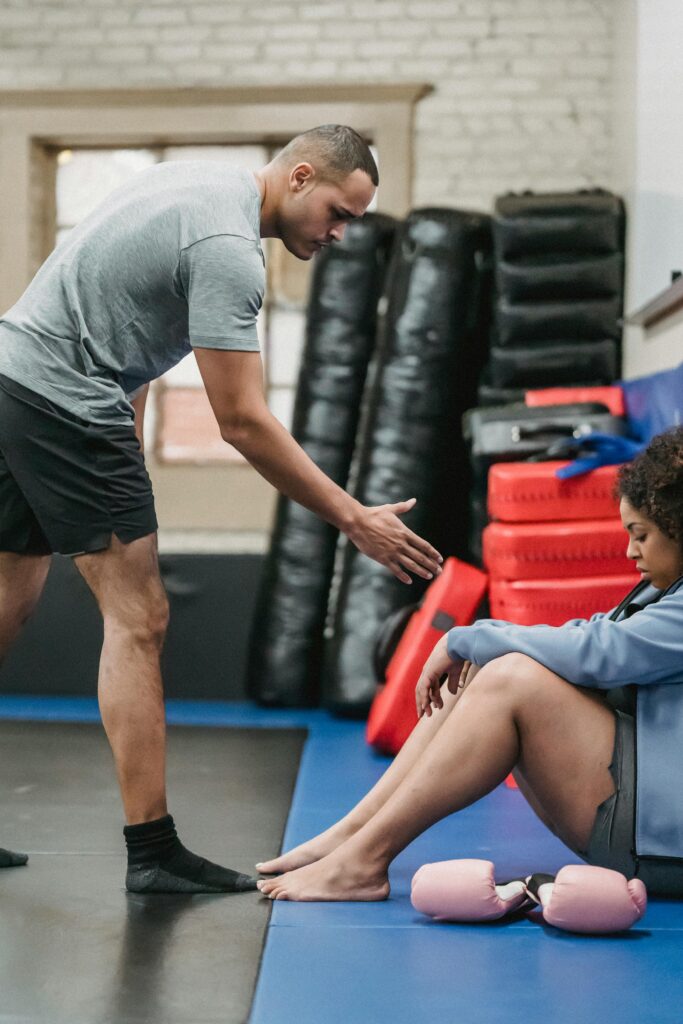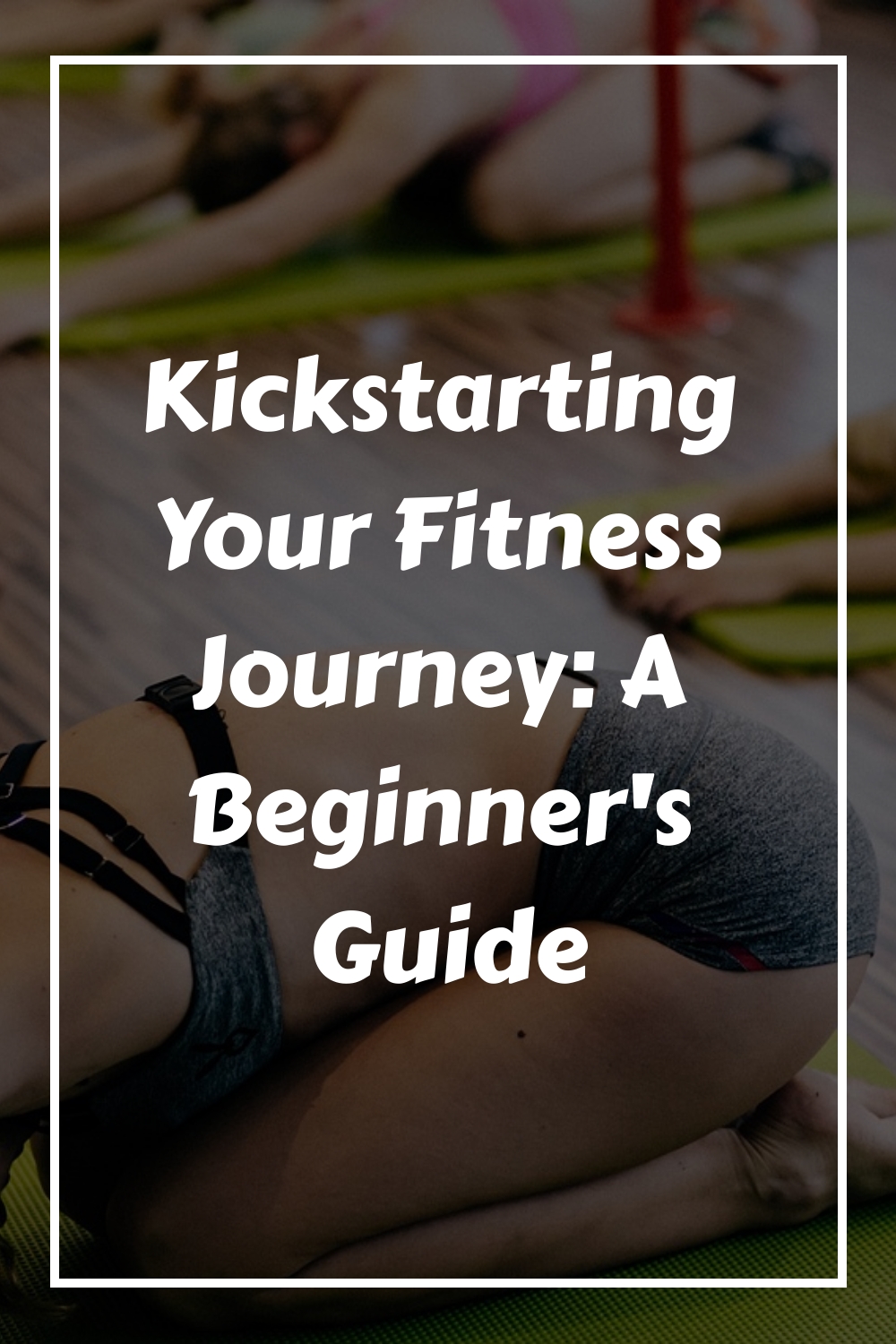
Table of Contents
Table of Contents
- Introduction
- Importance of Starting Right
- Overview of Success Pillars in Fitness
- Key Takeaways
- Quick Insights for Immediate Impact
- Crafting Your Workout Routine
- Finding Your Fit: Frequency and Duration
- How Often Should I Work Out?
- How Long Should My Workouts Be?
- Finding Your Fit: Frequency and Duration
- Preparing for Success
- Laying the Groundwork Before You Begin
- Do I Need to Warm-Up?
- Is Strength Training or Cardio Better?
- Laying the Groundwork Before You Begin
- Enhancing Your Recovery
- Strategies for Post-Workout Recovery
- What’s the Best Way to Help Sore Muscles?
- Strategies for Post-Workout Recovery
- Beginner’s Workout Plan
- A Structured Approach to Your First Month
- Week 1-4 Plan: Balancing Cardio and Strength Training
- A Structured Approach to Your First Month
- Continuous Support
- Keeping the Momentum Going
- Setting Realistic Goals
- Tracking Progress and Making Adjustments
- Keeping the Momentum Going
- Frequently Asked Questions (FAQs)
- Addressing Common Concerns and Queries
- Initial Steps for Starting a Fitness Journey
- Key Elements of a Beginner’s Workout Routine
- Balancing Workout Schedule with Rest Days
- Recommended Exercises for Overall Fitness
- Managing and Alleviating Muscle Soreness After Exercise
- Structuring a Beginner’s Workout Plan in the First Month
- Addressing Common Concerns and Queries
Starting a fitness journey can be intimidating, especially for beginners. However, it is important to start your fitness journey correctly to ensure long-term success. By crafting a workout routine, preparing for success, and enhancing your recovery, you can set yourself up for a successful fitness journey.
When crafting your workout routine, it is important to consider how often you should work out and how long your workouts should be. Finding a balance between activity and rest is crucial for preventing injury and allowing for proper recovery. Starting with 3-4 days a week and 30-minute sessions is a great place to begin.
Preparing for success involves warming up before your workouts to prevent injuries and incorporating a mix of strength training and cardio for optimal health. Enhancing your recovery involves post-workout recovery techniques, hydration, and rest. By incorporating these elements into your fitness journey, you can set yourself up for success.
Key Takeaways
- Crafting a workout routine involves finding a balance between activity and rest, starting with 3-4 days a week and 30-minute sessions.
- Preparing for success involves warming up before workouts, incorporating a mix of strength training and cardio, and enhancing recovery with post-workout recovery techniques, hydration, and rest.
- A beginner’s workout plan can include a week-by-week guide with exercises focusing on form and consistency, and adjustments made as fitness improves. Consistency and patience are key to long-term success.
Crafting Your Workout Routine

When it comes to crafting your workout routine, there are a few key questions you may have. Here are some answers to help you get started:
How Often Should I Work Out?
Finding the right balance between activity and rest is essential for a successful fitness journey. It’s important to challenge your body without overdoing it. Starting with 3-4 days a week can allow for adequate recovery time and help prevent injury. As your fitness level improves, you can gradually increase the frequency and intensity of your workouts.
How Long Should My Workouts Be?
Quality trumps quantity when it comes to workouts. Instead of focusing on how long your workouts are, focus on the intensity and effectiveness of each session. Starting with 30-minute sessions can be a good way to build consistency and avoid burnout. As you progress, you can gradually increase the duration and intensity of your workouts.
To ensure that you’re getting the most out of your workouts, consider tracking your progress and adjusting your routine as needed. This can help you stay motivated and avoid hitting plateaus. Remember, consistency is key when it comes to achieving your fitness goals.
Preparing for Success

Starting a fitness journey can be intimidating, but with the right preparation, you can set yourself up for success. In this section, we’ll cover some key areas to focus on before you begin your workouts.
Do I Need to Warm-Up?

Yes, warming up is an essential part of any workout routine. Warming up helps to increase blood flow to your muscles and prepare your body for exercise, reducing the risk of injury. A good warm-up should last around 5-10 minutes and include some light cardio and stretching exercises. Some simple warm-up exercises you can try include jumping jacks, walking lunges, and arm circles.
Is Strength Training or Cardio Better?
Both strength training and cardio have their benefits, and it’s important to incorporate both into your workout routine. Strength training helps to build muscle and increase strength, while cardio helps to improve your cardiovascular health and burn calories. A mix of both is optimal for overall health. A beginner’s workout plan could include bodyweight exercises like squats, lunges, and push-ups for strength training, and walking or cycling for cardio. As you progress, you can gradually increase the intensity and duration of your workouts.
Enhancing Your Recovery
What’s the Best Way to Help Sore Muscles?

When starting a new workout routine, it’s common to experience muscle soreness. This is known as Delayed Onset Muscle Soreness (DOMS) and occurs when muscles are worked in a new or more intense way. While it may be uncomfortable, it’s a normal part of the process and can be managed.
One of the best ways to help sore muscles is to engage in light activity. This increases blood flow to the affected area, which helps to reduce inflammation and speed up the healing process. Some examples of light activities include walking, cycling, and yoga.
Another effective way to help sore muscles is to use foam rollers or massage balls. These tools can be used to apply pressure to specific areas of the body, which helps to release tension and increase blood flow. This can be especially helpful for tight muscles or trigger points.
In addition to light activity and foam rolling, it’s important to prioritize rest and recovery. This means getting enough sleep each night, staying hydrated, and eating a balanced diet that includes plenty of protein. These things will help to support muscle repair and growth, which is essential for progress in your fitness journey.
Remember, it’s important to listen to your body and not push yourself too hard. While some muscle soreness is normal, excessive soreness or pain could be a sign of injury. If you experience sharp or persistent pain, it’s important to seek medical attention.
Beginner’s Workout Plan
Starting a fitness journey can be overwhelming, but having a structured plan can help you stay focused and motivated. In this section, we’ll provide a four-week workout plan designed to balance cardio and strength training, gradually increasing intensity as your fitness improves.
Week 1-4 Plan: Balancing Cardio and Strength Training

During the first four weeks, we recommend working out three days a week for 30 minutes each session. This will allow your body to recover and adjust to the new routine. The workouts will focus on light cardio such as walking or cycling, and basic strength training exercises using your own body weight.
Here is a sample workout plan for each week:
| Day | Workout |
|---|---|
| 1 | 10-minute warm-up (e.g., jogging in place, jumping jacks) followed by 20 minutes of cycling. Finish with 10 minutes of bodyweight exercises (e.g., squats, lunges, push-ups) |
| 2 | 10-minute warm-up followed by 20 minutes of walking or jogging. Finish with 10 minutes of bodyweight exercises |
| 3 | 10-minute warm-up followed by 20 minutes of cycling. Finish with 10 minutes of bodyweight exercises |
Note: Make sure to focus on proper form and consistency rather than intensity. If you feel like you can do more, try adding an extra set or increasing reps.
As you progress, you can gradually increase the intensity and duration of your workouts. In weeks 3-4, we recommend adding a fourth day and increasing the workout duration to 30-40 minutes. You can also increase the cardio intensity (e.g., jogging instead of walking) and introduce weights for strength training.
Remember to listen to your body and adjust the intensity as needed. Consistency and patience are key to achieving your fitness goals.
By following this four-week plan, you’ll have a solid foundation to build upon and continue your fitness journey.
Beginner’s Workout Program Plan
Starting a workout program can be overwhelming, especially if you are new to fitness. It is important to create a workout routine that is manageable and sustainable for your lifestyle. In this section, we will provide you with a beginner’s workout program plan that will help you kickstart your fitness journey.
Weeks 1-2: Foundation Building
During the first two weeks of your workout program, you will focus on building a foundation through light cardio and basic strength training exercises. We recommend starting with three days a week, with each workout lasting 30 minutes.
Here is a sample workout plan for weeks 1-2:
| Day | Activity |
|---|---|
| 1 | 10-minute brisk walk + 10 bodyweight squats + 10 push-ups + 10 lunges (each leg) |
| 2 | 10-minute stationary bike ride + 10 jumping jacks + 10 tricep dips + 10 sit-ups |
| 3 | 10-minute brisk walk + 10 bodyweight squats + 10 push-ups + 10 lunges (each leg) |
Weeks 3-4: Intensity Introduction
During weeks 3-4, you will increase the intensity of your workouts by adding a fourth day and introducing weights for strength training. We recommend increasing your workout duration to 30-40 minutes.
Here is a sample workout plan for weeks 3-4:
| Day | Activity |
|---|---|
| 1 | 10-minute jog + 10 dumbbell squats + 10 dumbbell shoulder press + 10 dumbbell rows |
| 2 | 10-minute stationary bike ride + 10 jumping jacks + 10 tricep dips + 10 sit-ups |
| 3 | 10-minute jog + 10 dumbbell lunges (each leg) + 10 dumbbell bicep curls + 10 dumbbell deadlifts |
| 4 | 10-minute stationary bike ride + 10 dumbbell squats + 10 dumbbell shoulder press + 10 dumbbell rows |
Remember to listen to your body and adjust the intensity as needed. Consistency is key to achieving your fitness goals, so make sure to stick to your workout routine. With patience and dedication, you will see progress and feel more confident in your fitness journey.
Continuous Support

Starting a fitness journey can be challenging, but with consistency and patience, you can achieve your goals. It’s important to remember that progress takes time, and everyone’s journey is unique. That’s why continuous support is crucial to your success.
Here are some ways to stay on track and motivated:
- Set realistic goals: It’s important to set goals that are achievable and realistic. This will help you stay motivated and focused on your progress.
- Track your progress: Keep track of your workouts, measurements, and how you feel. This will help you see your progress and make adjustments to your routine as needed.
- Find a workout buddy: Having a workout partner can help keep you accountable and motivated. You can encourage each other and celebrate your progress together.
- Join a fitness community: Joining a fitness community can provide you with support, motivation, and advice. You can find online communities or join a local gym or fitness class.
- Listen to your body: It’s important to listen to your body and adjust your routine as needed. If you feel tired or sore, take a rest day. If you feel energized and motivated, push yourself a little harder.
Remember, your fitness journey is a personal one, and there is no one-size-fits-all approach. Be patient, consistent, and enjoy the process. With continuous support, you can achieve your goals and live a healthier, happier life.
Kickstarting Your Fitness Journey: A Beginner’s Guide

Remember, it’s important to start correctly to avoid injuries and burnout. Let’s discuss the key elements of a beginner’s workout routine, how to balance your workout schedule with rest days, and tips for managing muscle soreness after exercise. We’ll also provide a beginner’s workout plan for the first month and answer frequently asked questions to help you get started.
Crafting Your Workout Routine
How Often Should I Work Out?
Finding the right balance between activity and rest is crucial for your fitness journey’s success. It’s recommended that beginners start with 3-4 days a week to allow for recovery. As your fitness level improves, you can gradually increase the frequency of your workouts.
How Long Should My Workouts Be?
Quality trumps quantity when it comes to workouts. It’s essential to focus on good form and consistency rather than the duration of your workout. Starting with 30-minute sessions is a great way to build a strong foundation.
Preparing for Success
Do I Need to Warm-Up?
Warming up is essential to prevent injuries and prepare your body for a workout. Simple warm-up exercises like jumping jacks, lunges, and arm circles can help increase your heart rate and flexibility.
Is Strength Training or Cardio Better?
Both strength training and cardio have their unique benefits. Strength training helps build muscle, while cardio improves cardiovascular health and burns calories. Incorporating a mix of both is ideal for optimal health.
Enhancing Your Recovery
What’s the Best Way to Help Sore Muscles?
Post-workout recovery techniques like stretching, foam rolling, and massage can help alleviate muscle soreness. It’s also crucial to stay hydrated and get enough rest to aid recovery.
Workout Plan

Week 1-4 Plan: Balancing Cardio and Strength Training
During the first month, it’s essential to focus on form and consistency. Here’s a week-by-week guide on exercises to help you get started:
- Week 1: Light cardio (walking, cycling) + basic strength training (bodyweight exercises).
- Week 2: Increase cardio intensity (jogging) + bodyweight exercises.
- Week 3: Introduce weights for strength training + cardio.
- Week 4: Increase intensity and duration of workouts.
Remember to listen to your body and adjust the intensity as needed. Consistency and patience are key to a successful fitness journey.
Frequently Asked Questions

What are the initial steps to take when embarking on a fitness journey?
The initial steps to take when starting a fitness journey include setting realistic goals, creating a workout plan, and tracking progress. It’s also essential to consult a healthcare professional before starting any new exercise routine.
What are the key elements to include in a beginner’s workout routine?
A beginner’s workout routine should include a mix of cardio and strength training, warm-up exercises, and post-workout recovery techniques.
How can I effectively balance my workout schedule with rest days?
It’s crucial to listen to your body and allow for recovery time between workouts. Starting with 3-4 days a week and gradually increasing frequency is a great way to balance your workout schedule with rest days.
What types of exercises should I focus on as a beginner to achieve overall fitness?
A mix of cardio and strength training exercises is ideal for achieving overall fitness. Bodyweight exercises, weight lifting, and cardio activities like walking, running, and cycling are great options for beginners.
How do I manage and alleviate muscle soreness after exercise?
Post-workout recovery techniques like stretching, foam rolling, and massage can help alleviate muscle soreness. It’s also crucial to stay hydrated and get enough rest to aid recovery.
What should a beginner’s workout plan look like in the first month?
A beginner’s workout plan in the first month should focus on form and consistency. It should include a mix of light cardio, basic strength training, and warm-up exercises. As your fitness level improves, you can gradually increase the intensity and duration of your workouts.


